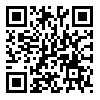
Journal of Emergency Health Care
Formerly known as: International Journal of Medical Investigation

Volume 11, Issue 4 (12-2022)
J Emerg Health Care 2022, 11(4): 82-92 |
Back to browse issues page
Download citation:
BibTeX | RIS | EndNote | Medlars | ProCite | Reference Manager | RefWorks
Send citation to:



BibTeX | RIS | EndNote | Medlars | ProCite | Reference Manager | RefWorks
Send citation to:
Jahromi F F, Pournoroz N, Golestan M, Mahdood B. The Effect Of New Training On Nursing Students' Learning. J Emerg Health Care 2022; 11 (4) :82-92
URL: http://intjmi.com/article-1-941-en.html
URL: http://intjmi.com/article-1-941-en.html
MSc of surgical technology, Department of operating room, faculty member of Paramedical school, Jahrom University of medical sciences, Jahrom, Iran.
Abstract: (2448 Views)
Background: The two new educational models based on problem-solving and results-based are those in which the required performance in the therapeutic role is attained. This research was created to include these two strategies in nursing students' clinical learning.
Method: This study has a two-group design and is semi-experimental. Forty-three sixth-semester nursing students who completed an internship in the specialty department during the first semester of the academic year 2019-2020 were among the samples included in the study. The census approach was used to choose the samples. The variance of two groups in the clinical learning variable was compared using the Kolmogorov-Smirnov test, linear regression using the simultaneous method, and Levene’s F test.
Results: In independent groups of nursing students receiving both problem-solving and outcome-based instruction, there was no discernible difference in the quantity of clinical learning (P>0.05). In the two training groups, the learning score variance was similar.
Conclusion: Accordingly, the research's findings indicated that both novel teaching approaches favorably impacting students in the cardiac special care department. Clinical professors can employ each of these approaches in the clinical education of nursing students, depending on the conditions and facilities available.
Method: This study has a two-group design and is semi-experimental. Forty-three sixth-semester nursing students who completed an internship in the specialty department during the first semester of the academic year 2019-2020 were among the samples included in the study. The census approach was used to choose the samples. The variance of two groups in the clinical learning variable was compared using the Kolmogorov-Smirnov test, linear regression using the simultaneous method, and Levene’s F test.
Results: In independent groups of nursing students receiving both problem-solving and outcome-based instruction, there was no discernible difference in the quantity of clinical learning (P>0.05). In the two training groups, the learning score variance was similar.
Conclusion: Accordingly, the research's findings indicated that both novel teaching approaches favorably impacting students in the cardiac special care department. Clinical professors can employ each of these approaches in the clinical education of nursing students, depending on the conditions and facilities available.
References
1. 1. Mohammadpour Y, Valizadeh S, KobraParon K, Haririyan HR. Effect of training based on the clinical competence of nursing students. Journal of Ardabil School of Nursing and Midwifery. 2000; 11 (4): 1-15.
2. Salimi T, Karimi H, Shahbazi L, Dehghanpour MH, Hafezia A, Parand K. Assessment of clinical skills of senior nursing students in intensive care units. JournalShahidSadoughi University of Medical Sciences. 2005; 25 (3):13-26.
3. Farnia, F. Productivity in Clinical Education from the Point of View of Nursing and Midwifery Students. Journal of Science ShahidSadoughi Medical and Health Services. 2000; 7(2): 8-28.
4. Jafaraghaie F, Dehghanzadeh S, Khordadi-Astane H. Nursing students’ experience in a flipped classroom method. Research in Medical Education. 2017 Apr 15;9(1):36-27. Oliffe J. Facilitation in PBL- Espoused theory versus theory inuse. Reflections of a first time user.The Australian. Electronic Journal of Nursing Education 2000 5(2): 1-9.
5. Rideout E, England-oxford V, Brown B, FothergillBourbonnais F, Ingram C, Benson G. A comparison ofproblem-based learning and conventional curricula innursing education. Advanced in Health SciencesEducation 2004; (1): 3-17.
6. McEwen M, Wills EM. Theoretical Basis for Nursing. Philadelphia: Lippincott William & Wilkins. Co; 2002.
7. Matthews S. What is the purpose of outcome-based education? Lives in Kochi, Kerala, India 2009; (4): 5-20.
8. Heejung C. A problem-based learning trial on the internet involving undergraduate nursing students. Journal of Nursing Eduction 2003; 42(8): 359-63.
9.Alavi M, IrajpourA ,Nasiri A, Abedi H].Barriers to clinical education: Student nurses Experiences[. Scientific Quarterly of Birjand Nursing and Midwifery Faculty 2009; 6(7): 1-4. (persian)
10. Patricia J M, Johanna D. A structured process to develop scenarios for use in evaluation of an evidence-based approach in clinical decision making. Advances in Medical Education and Practice 2012; 3(4): 113-119.
11. AmirhosseinKayzouri, Mohsen Sadeghpour. A Comparison on the Effects of Traditional, E-Learning and Traditional-E learning on the Pharmacology Course of Nursing Students. Journal of Sabzevar University of Medical Sciences, 2012; 24 (2): 127-123.
12.Jenkins A. & Unwin D. How to write learning outcomes [updated 2001 Nov
13.Salimitahereh, karimi Hossein, ShahbaziLeili, DehghanpourMohammadhassan, hafeziyeh Abbas, ParandKatayoun, A study on Clinical Skills of Nursing Students in Emergency Care Unit in the Last Year, Journal of Sadooghi Yazd Medical University, 2001,13, pp.20-22.
14. Foruzesh A, SarafiNejadadAfshin, ZiazestaniYaser .Software "electronic test Ibn Sina" a new approach in the evaluation of clinical medical educationIranian Journal of Medical Education: 2005;9(5): 68-79.
15.Asadi N. Effect of Simultaneous Teaching of Human Anatomy and Physiology on Occupational Health Students’ Learning Bimonthly of Education Strategies in Medical Sciences 2014; 7(2): 89 – 92.
16. Tiffen J, Corbridge S, Shen BC, Robinson P. Patient simulator for teaching heart and lung assessment skills to advanced practice nursing students. Clinical Simulation in Nursing 2011;7(3):e91-e7.
17. Namnabati M, Fathi Azar E, Valizadeh S, Tazakori Z. Lecturing or Problem-based Learning: Comparing Effects of the Two Teaching Methods in Academic Achievement and Knowledge Retention in Pediatrics Course for Nursing Students. Iran J Med Educ 2011; 10 (4):474-482.
18. Sharifirad GR, Rezaeian M, Jazini A, Etemadi ZS. Knowledge, attitude and performance of academic members regarding effective communication skills in education. J Educ Health Promot 2012;1:42.
| Rights and permissions | |
 |
This work is licensed under a Creative Commons Attribution-NonCommercial 4.0 International License. |



